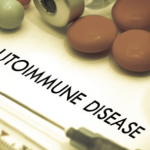“I think you are wrong to want a heart. It makes most people unhappy. If you only knew it, you are in luck not to have a heart.”
—The Wizard of Oz to the Tin Woodman
The heart, symbolically and literally, is a subject of introspection and study for humans throughout history. For patients with rheumatoid arthritis (RA) and their rheumatologists, the heart is a cause of concern because patients with RA have an increased risk of heart disease compared with the general population.1 In fact, RA patients were found to have a higher mortality rate than expected due to cardiovascular disease (CVD).2 This increased risk of CVD is attributed to the chronic inflammation associated with the RA.3 A big question facing rheumatologists is what we can do to improve management of heart disease in RA patients. To do so, we need to answer three important questions:
- How do we estimate risk of CVD in RA?
- Which interventions decrease CVD risk?
- What should be the targets of the interventions?
Although we don’t have definitive answers to these questions, this article will provide an overview of what we know so far.
An Educated Guess
Uncle Henry and Aunt Em didn’t need to see the cyclone to know it was coming and to call for Dorothy and run for cover; all they needed was their intuition about the risk of a cyclone approaching based on the signs in weather preceding its appearance. Years of clinical practice provide us with intuition about the risk of heart disease in our patients. However, in an ideal world, we would have hard evidence to back our treatment decisions.
For some patients, aggressive primary preventive therapy (e.g., a target low-density lipoprotein (LDL) of 100 mg/dL) is an obvious goal, regardless of their formal Framingham Risk Score. I recently met a new patient, a 55-year-old man with seropositive RA for five years who has hypertension, is overweight, and is living a sedentary lifestyle. His family history is notable for his father who died of sudden cardiac death at the age of 57. Pertinent findings include his nonsmoking status, a blood pressure of 125/80 mmHg (on antihypertensive therapy), a total cholesterol of 192 mg/dL, and a high-density lipoprotein (HDL) of 40 mg/dL. Although his fasting LDL was 128 mg/dL, a reasonable level according to national guidelines, I started him on a statin drug after his first visit. In most cases, the choice for treatment is not that obvious. My clinical intuition often tells me that a particular patient is at higher risk, but how much higher?


